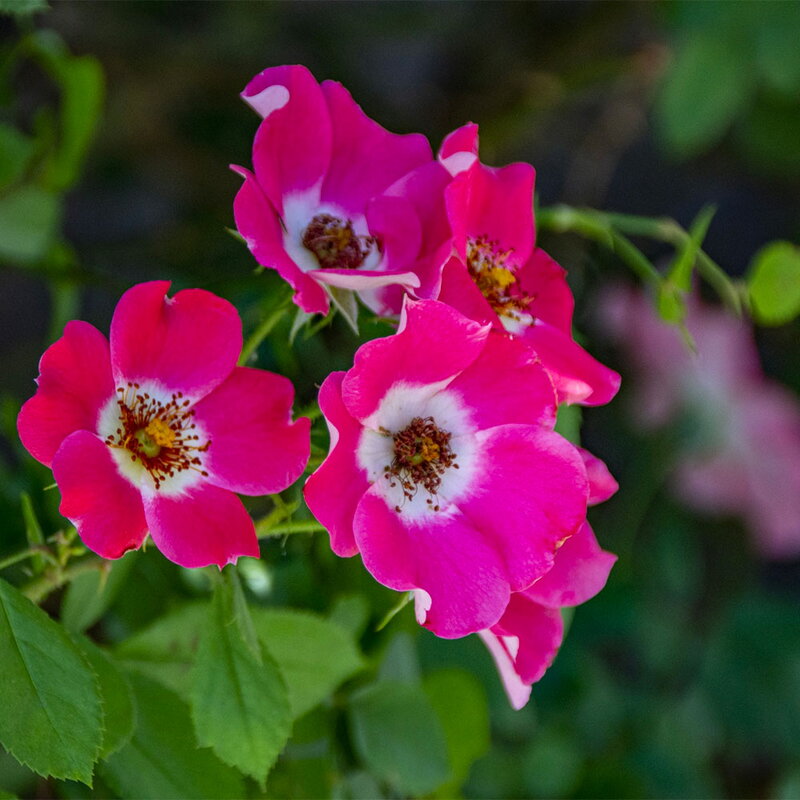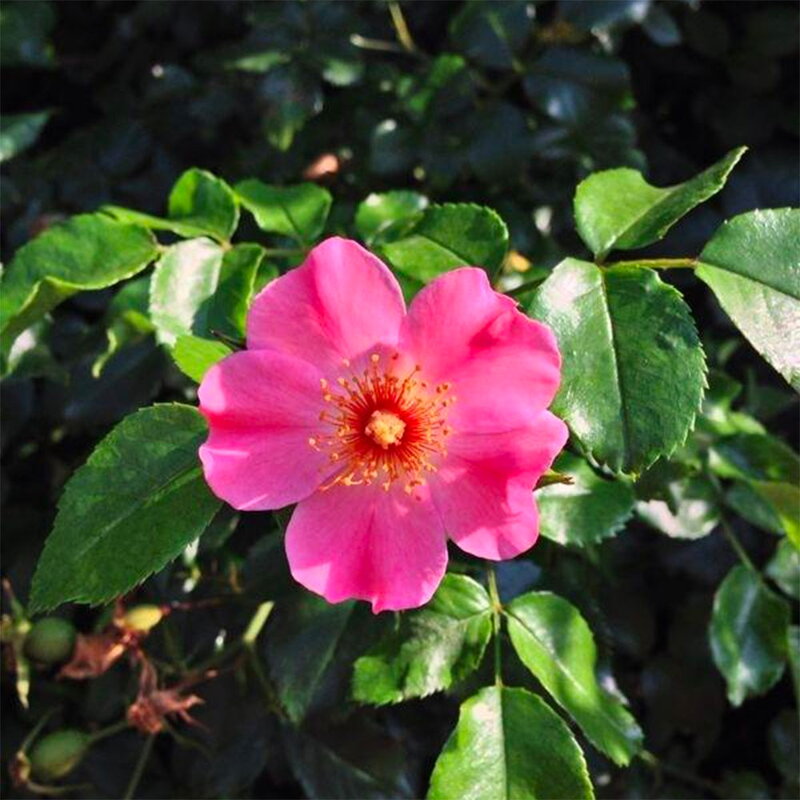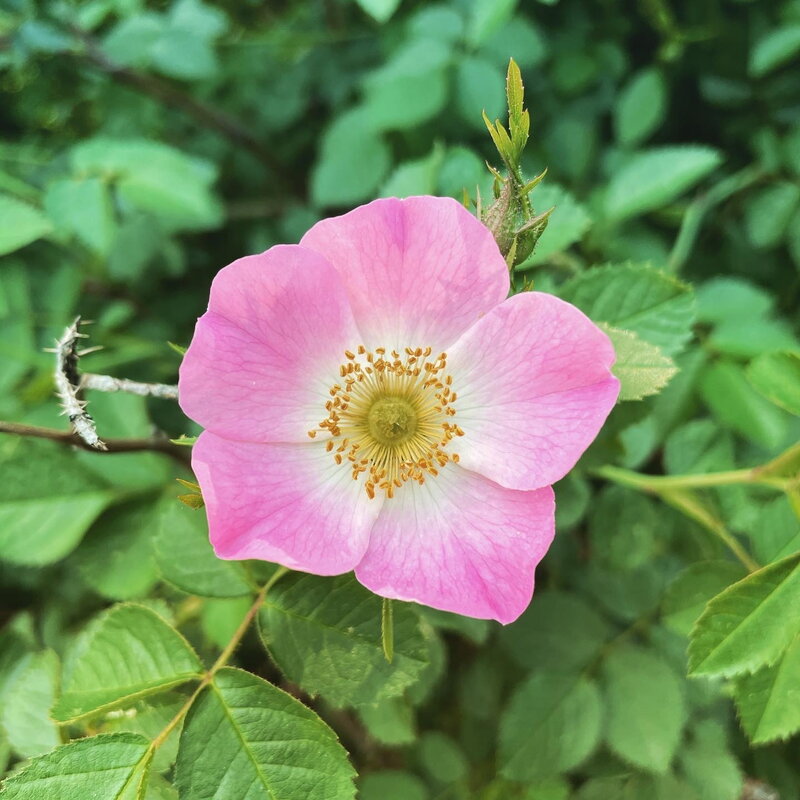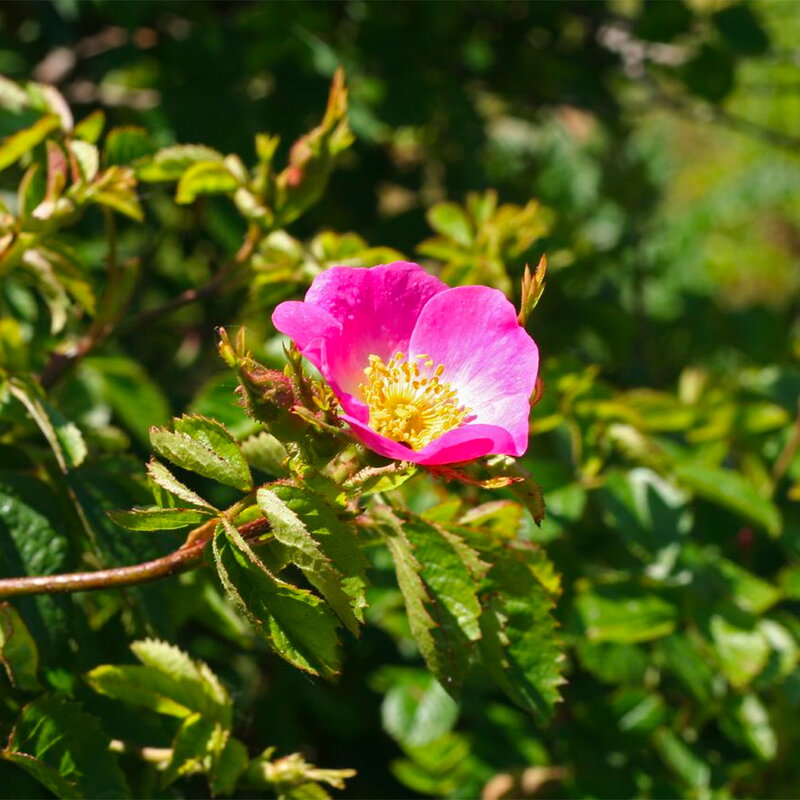Sweetbrier Rose Bush





Sweetbrier Rose Bush
Rosa rubiginosa (also known as eglanteria)
6’, Zone 4. Erect with unequal hooked prickles. Rose pink single flowers. Sweet spicy apple scented foliage. A pleasant vigorous informal hedge.
Rosa rubiginosa (sweet briar, sweetbriar rose, sweet brier or eglantine; syn. R. eglanteria) is a species of rose native to Europe and western Asia.
In addition to its pink flowers, it is valued for its scent and the hips that form after the flowers and persist well into the winter. Graham Thomas recommends that it should be planted on the south or west side of the garden so that the fragrance will be brought into the garden on warm, moist winds. A specimen without any scent, and blush to white flowers may be the closely related fieldbriar, Rosa agrestis.
The tea made from the hips of this rose is very popular in Europe and elsewhere, where it is considered a healthy way for people to get their daily dose of vitamin C and other nutrients. A cup of rosehip tea will provide the minimum daily adult requirement of vitamin C. During World War II the British relied on rose hips and hops as the sources for their vitamins A and C. It was a common British wartime expression to say that: "We are getting by on our hips and hops."
In Tunisia, natural flower water is produced from its flowers.
In Chile and Argentina, where it is known in Spanish as "Rosa Mosqueta", it is cultivated to produce marmalades and cosmetic products, and has escaped into the wild in and near the Andes.
It is a dense deciduous shrub 2–3 meters high and across, with the stems bearing numerously hooked prickles. The foliage has a strong apple-like fragrance. The leaves are pinnately compound, 5–9 cm long, with 5–9 rounded to oval leaflets with a serrated margin, and numerous glandular hairs. The flowers are 1.8–3 cm in diameter, the five petals being pink with a white base, and the numerous stamens yellow; the flowers are produced in clusters of 2–7 together, from late spring to mid-summer. The fruit is a globose to oblong red hip 1–2 cm in diameter.
